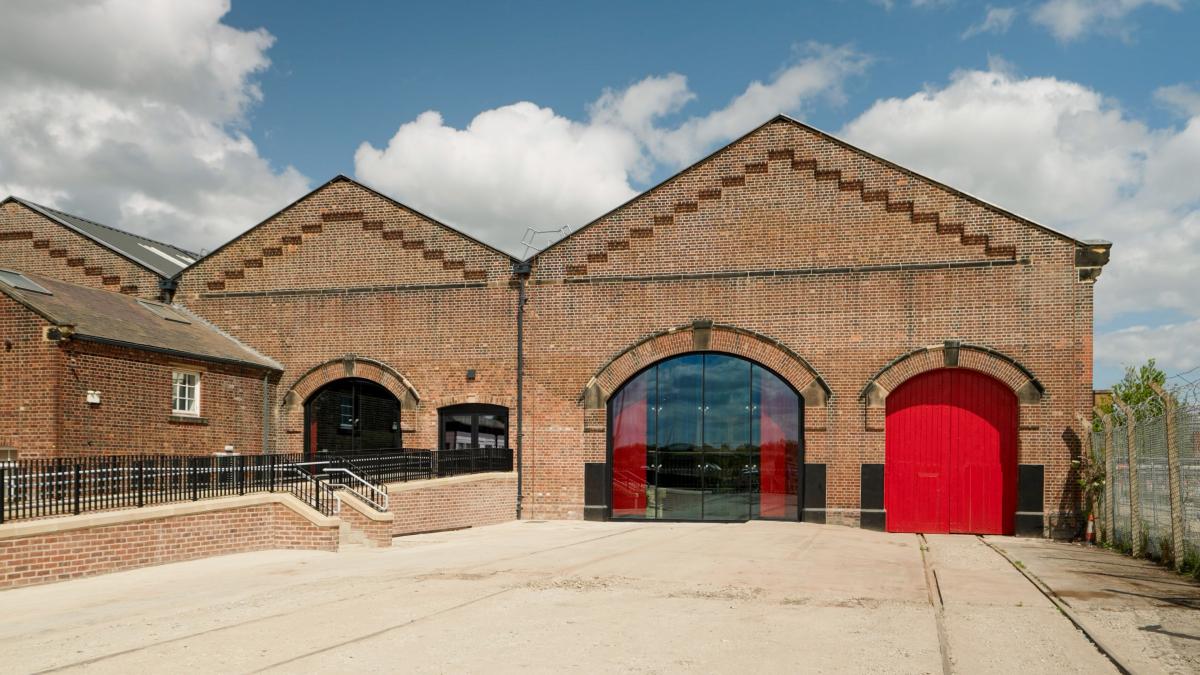
On Friday 26 September, the refurbished Grade II listed Station Hall reopens after an £11m transformation in time to celebrate the National Railway Museum's 50th birthday weekend (27–28 September) and Railway 200, the bicentenary of the modern railway.
As part of the restoration works which started in 2023, Buttress Architects have undertaken a major re-roofing project which saw the entire 6000m² roof come off the Station Hall building, whilst the historic locomotives were left in-situ and shrouded with protective scaffolding to shield them whilst the works were carried out. This is the museum’s biggest structural project since its opening in 1975.
Buttress worked alongside the National Railway Museum team in York to painstakingly ensure that all the historical locomotives and carriages - including Queen Victoria’s train, King Edward’s train Queen Mary’s and the Queen Mother’s train - were protected from the works above.
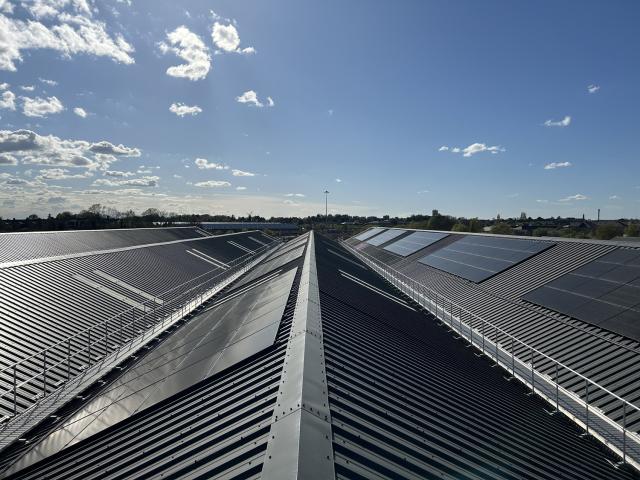
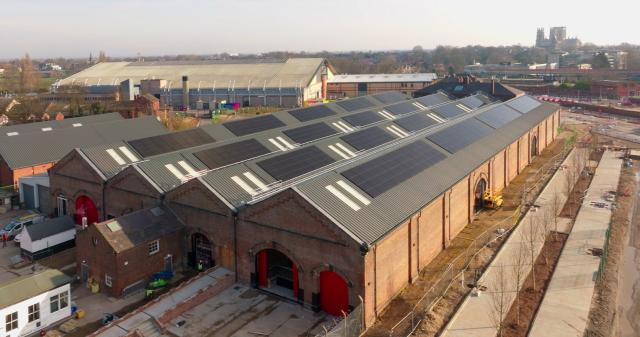
Alex Scrimshaw, Associate Technologist, Buttress said:
“This was one of the biggest challenges of the project. Before any building construction works could start, the existing locomotives and vehicles were encapsulated within mobile scaffold frames, clad with solid steel sheeting to the roof and membrane wrap. The scaffold frames were constructed within the Hall and moved on tracks over the locomotives. This created an impact-resistant envelope that protected the collection from potential damage. It also allowed a full scaffold crash-deck to be installed above, giving contractors safe access to complete the re-roofing and high-level fabric repairs. As the project did not have an external temporary roof, the internal crash-deck was covered with scaffold sheeting to provide a secondary barrier against potential water ingress from inclement weather.”
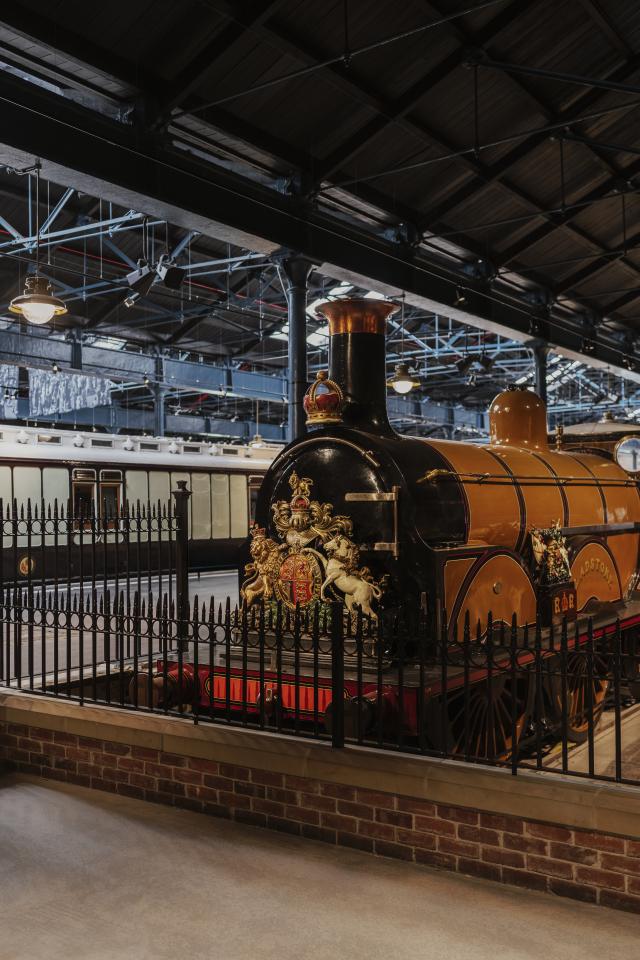
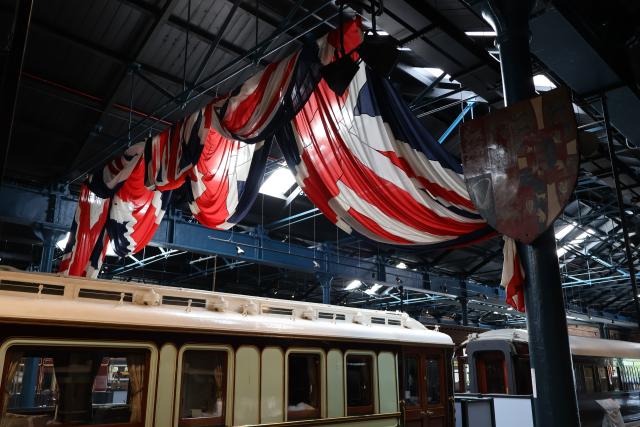
Water ingress was an issue with the old roof, so making it water-tight and sound was as basic requirement of the project. In addition, there were a lot of gaps identified in building meaning warm air was escaping and cold air was getting inside so fixing this and making sustainable improvements was a priority.
The extensive works also include:
- A new thermally efficient roof, providing a weather-tight solution to keep the collection fully protected and preserve the historic structure for future generations. This major job involved the installation of 632 solar photovoltaic panels across the roofscape (spanning nearly 6,000m2), including the provision of rooflights with UV film to prevent degradation of interior collections and the installation of safe accessible platforms across roof slopes and valleys, to aid maintenance tasks in the future. The result is that natural light covers the entire Station Hall and lights the magnificent locomotives and carriages across the platforms.
- Restoration of the original shutter doors which once allowed locomotives to transfer from the Hall onto the main railway line, as well as horse-drawn vans. The shutter doors themselves were in reasonable condition but sliding tracks and the door gear had to be restored to bring this back to an operational condition.
- New glazed screens installed on the south and west elevations of the building, specially designed to be demountable, and to increase the thermal performance of the Hall allowing for train moves in the future. Most sites do not have to contend with vehicles of this size moving in and out of a building. The new windows bring natural daylight into the space and allow for magnificent views both from within the Hall looking out, and from the outside looking in. For the first time, the public can glimpse the collections and locomotives, day and night. Originally, shutter doors would have been opened when the Hall was used as a goods station; installing windows in the arches restores lighting that is closer to what it would once have been.
Alex, an experienced architectural technologist working within the heritage team, adds:
“We drew inspiration from the Burgos Railway Station in Spain for the new glazed screens. They are essentially a large Meccano set, nuts, bolts and components, allowing parts to be deconstructed and reconstructed.
He concludes: “Seeing Station Hall reopen after our restoration works has been a real privilege. Protecting such an important Grade II listed building was both a challenge and a responsibility that we are proud to be part of. The re-roofing project was not merely about maintaining a building; it's about safeguarding the essence of British railway history. The significant collection are the vessels that carry the stories of a nation. The legacy of these trains and locomotives will continue to inspire and educate generations to come. To complete the project in time for the museum’s 50th anniversary feels especially fitting.”
Alex Scrimshaw
Alex is an experienced architectural technologist working within the practice’s historic buildings team.
Emily Green
Emily is a skilled architect whose experience ranges from small residential schemes to large-scale industrial masterplans.
Peter Levers
Peter is an experienced architectural technologist who joined Buttress having worked on a number of significant and highly sensitive projects for the MOD.


